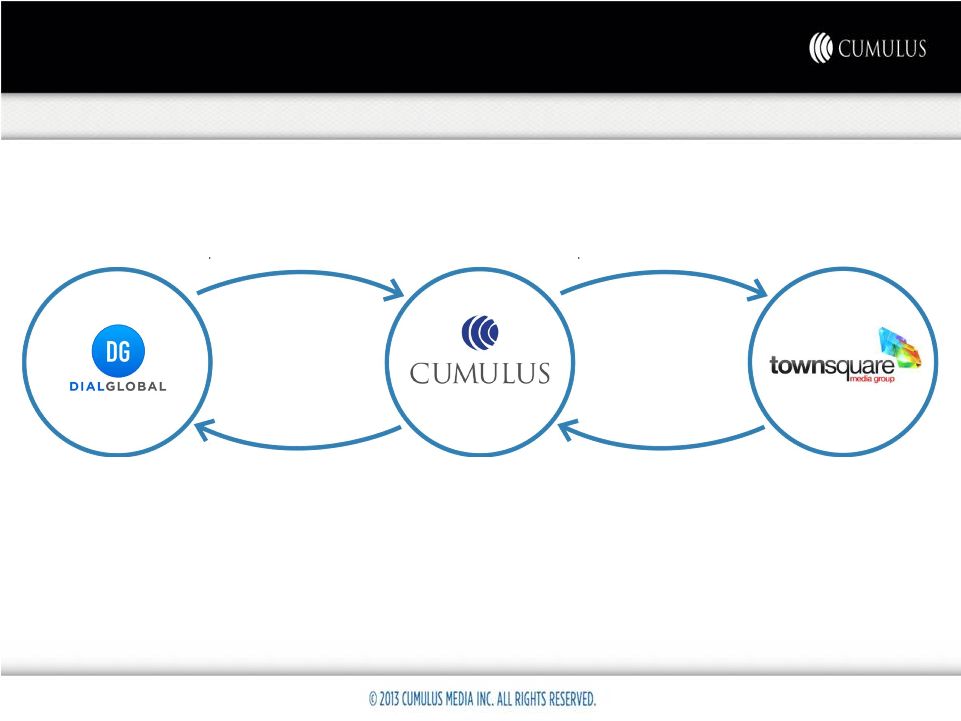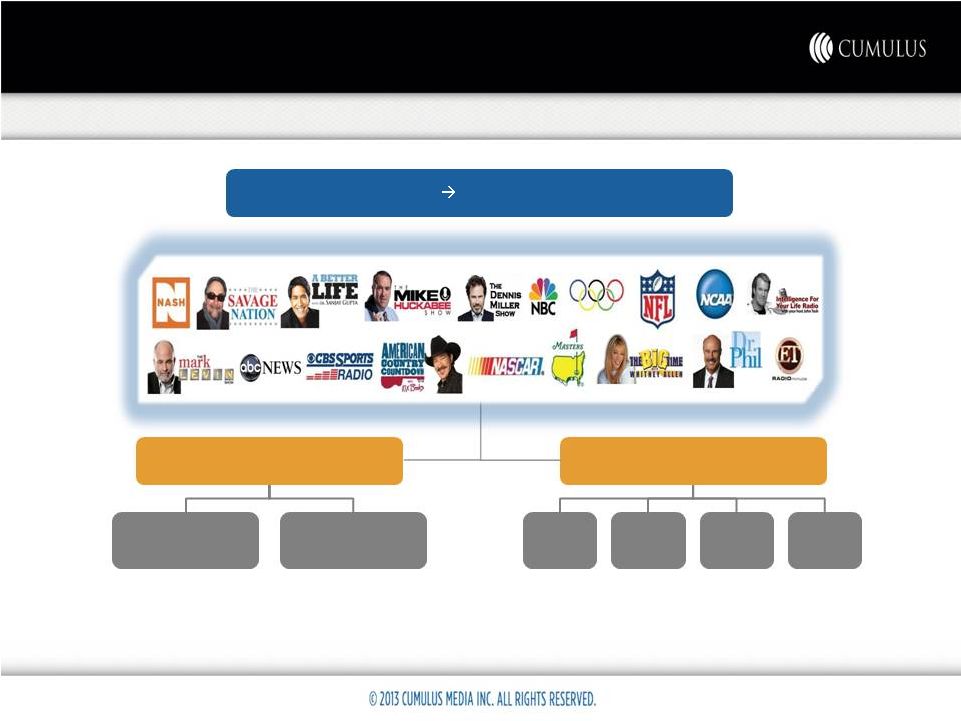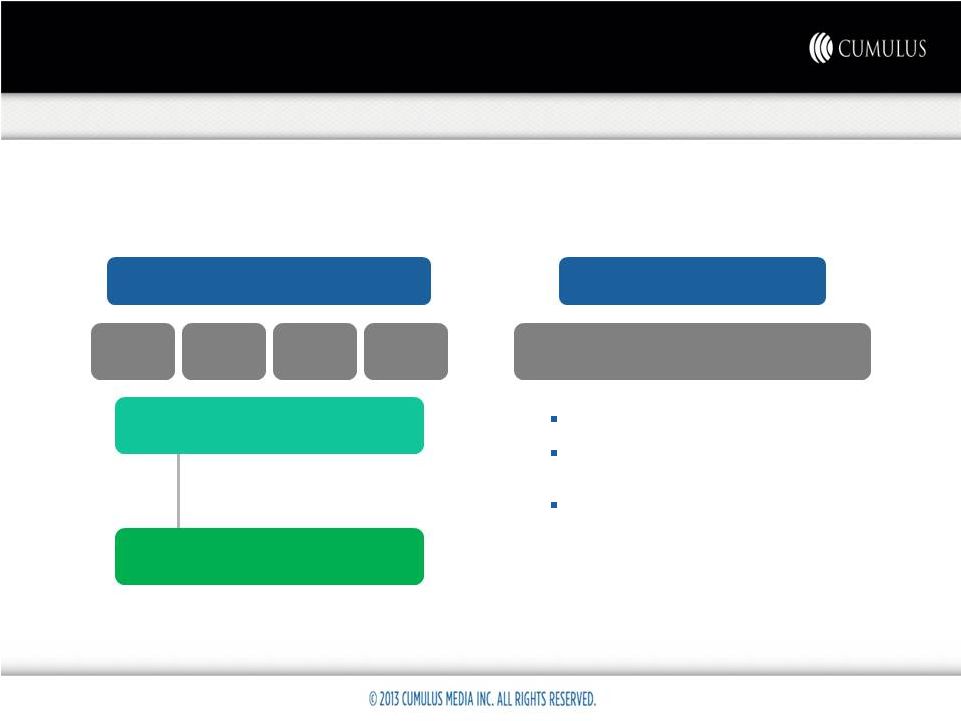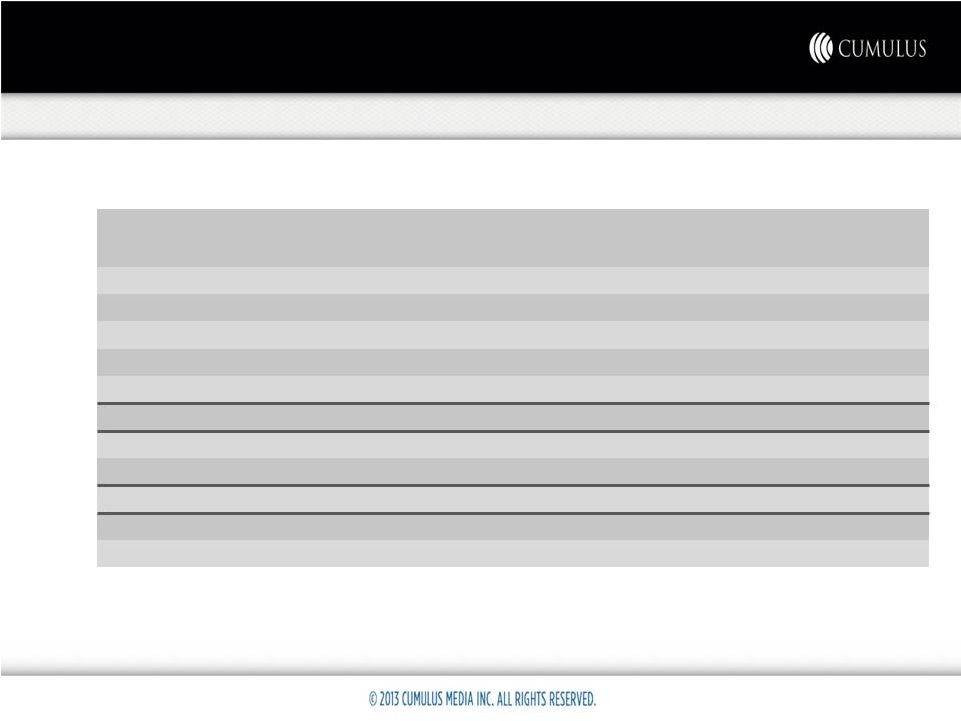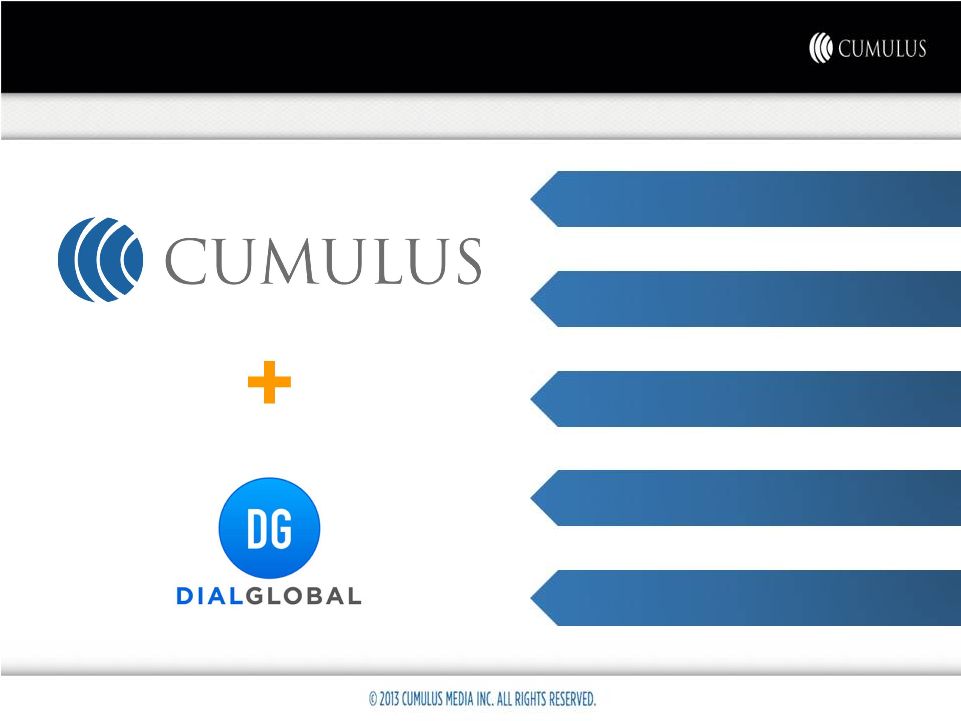IMPORTANT NOTICES Page | 1 Forward-Looking Statements This presentation contains “forward-looking” statements regarding, among other things, the recently announced pending Dial Global acquisition, expected earnings, revenues, cost savings, leverage, operations, business trends and other items, that are based on current expectations and estimates or assumptions. These forward-looking statements involve risks and uncertainties that could cause actual results to differ materially from those predicted in any such forward-looking statements. Such factors include, but are not limited to Cumulus’ ability to complete the Dial Global acquisition on the expected timeline, the failure to obtain necessary regulatory approvals or to satisfy any other conditions to the acquisition, the failure to realize the expected benefits of the acquisition, and general economic and business conditions that may affect the companies before or following the acquisition. For additional information regarding risks and uncertainties associated with Cumulus, see Cumulus’ filings with the Securities and Exchange Commission (“SEC”) made from time to time, including its Form 10-K for the year ended December 31, 2012. Cumulus assumes no responsibility to update the forward-looking statements contained in this presentation as a result of new information, future events or otherwise. Non-GAAP Financial Information This presentation contains the non-GAAP financial metrics Adjusted EBITDA and net debt. We define Adjusted EBITDA as net income (loss) before any non-operating expenses, including net interest expense, depreciation and amortization, stock-based compensation expense, gain or loss on exchange or sale of assets or stations (if any), gain or loss on derivative instruments (if any), discontinued operations (if any), impairment of intangible assets and goodwill (if any), local marketing agreement (“LMA”) fees, acquisition-related costs and franchise taxes. Adjusted EBITDA is the financial metric utilized by management to analyze the cash flow generated by our business. This measure isolates the amount of income generated by our radio stations after the incurrence of corporate, general and administrative expenses. Management also uses this measure to determine the contribution of our radio station portfolio, including the corporate resources employed to manage the portfolio, to the funding of our other operating expenses and to the funding of debt service and acquisitions. In deriving this measure, management excludes depreciation, amortization and stock-based compensation expense, as these do not represent cash payments for activities directly related to the operation of the radio stations. In addition, we exclude LMA fees from our calculation of Adjusted EBITDA even though such fees require a cash settlement, because they are excluded from the definition of Adjusted EBITDA contained in our first lien credit facility. Management excludes any gain or loss on the exchange or sale of assets or radio stations as they do not represent a cash transaction. Management also excludes any realized gain or loss on derivative instruments as they do not represent a cash transaction nor are they associated with radio station operations. Interest expense, net of interest income, income tax (benefit) expense including franchise taxes, and expenses relating to acquisitions are also excluded from the calculation of Adjusted EBITDA as they are not directly related to the operation of radio stations. Management excludes any impairment of goodwill and intangible assets as they do not require a cash outlay. Management believes that Adjusted EBITDA, although not a measure that is calculated in accordance with GAAP, nevertheless is commonly employed by the investment community as a measure for determining the market value of a radio company. Management has also observed that Adjusted EBITDA is routinely employed to evaluate and negotiate the potential purchase price for radio broadcasting companies and is a key metric for purposes of calculating and determining compliance with certain covenants in our first lien credit facility. Given the relevance to our overall value, management believes that investors consider the metric to be extremely useful. Adjusted EBITDA should not be considered in isolation of, or as a substitute for, net income, operating income, cash flows from operating activities or any other measure for determining our operating performance or liquidity that is calculated in accordance with GAAP. We define net debt as the sum of long-term debt, short-term debt (if any) and capital leases (if any) less unrestricted cash and cash equivalents. We believe that net debt is a useful metric because it provides investors with an estimate of what the Company’s debt would be if all available cash was used to repay outstanding indebtedness of the Company. The measure is not meant to imply that management intends to use available cash in this manner. A quantitative reconciliation of our Adjusted EBITDA as presented herein to net income (loss), the most directly comparable financial measure calculated and presented in accordance with GAAP, is provided in the Appendix hereto. A reconciliation of net debt as presented herein to total debt is self evident on the face of the relevant accompanying table. | 


